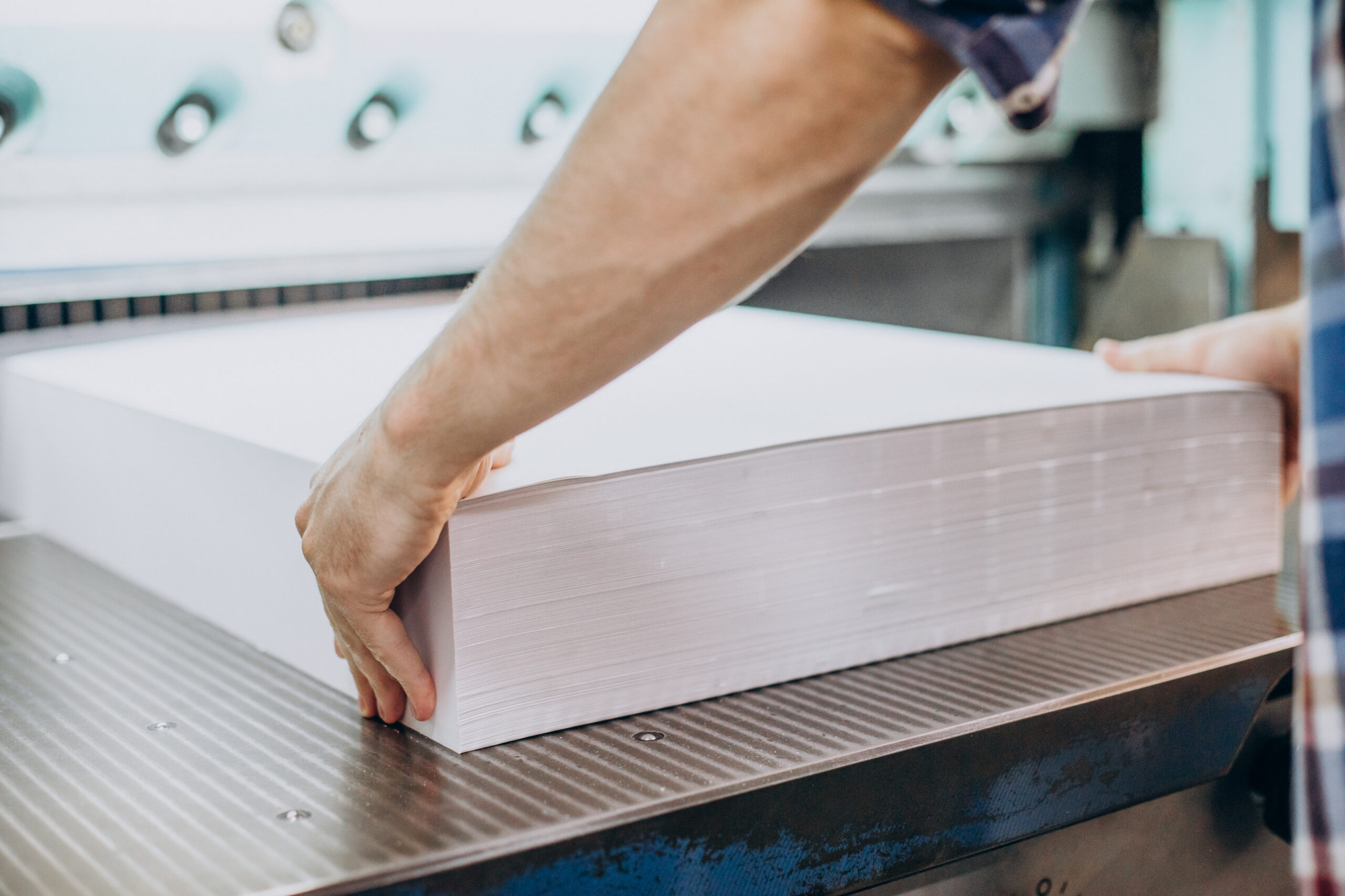When printing a photo or text at home, digital printing is used because the file is not processed, it goes straight from the computer to the paper. The printer does all the work, it does not need an intermediate material as with offset plates in traditional printing. This makes it possible to apply it to all types of materials, not just paper, making the process simpler and making it available to everyone.
Digital printing can be done by inkjet or laser. The former requires cartridges and the latter toners, both options that surely sound familiar to those who have a printer at home or at work. In an industrial printing company specialized in graphic arts like ours we also use them, but on a much larger scale because we print thousands of papers.
The printing machine head moves by drawing horizontal lines at high speed and at one time for all colors, as opposed to four-color printing where the same paper or support is printed four times, resulting in a much slower process. It also differs in that the paper does not come into contact with the machine because there are no plates. Even so, the separation of inks is maintained and it is necessary to have several cartridges or toners to ensure a good quality in the final result when the original has some colors more used than others.
Digital printing can be used in large format, but it is the best option for small format, for example for calendars, notebooks, diaries, stickers, flyers or any corporate stationery.
What are the advantages of using a digital printer?
In our experience as digital printers, this type of printing has several advantages over others, although perhaps the most important is its low cost for low volume and urgent projects. Although, logically, it varies depending on the order.
Here are the benefits most valued by our customers:
Varied supports and finishes: as we have advanced, digital printing can be applied to paper as well as to fabrics, adhesives or vinyls. In addition, it accepts textures, prints and finishes that cannot be achieved with other types of printing, which makes it very eye-catching.
Flexibility:
since it can be used on any support, it offers a wide range of options that give a great deal of freedom to customize the final result. Thus, companies can take advantage of all their creativity to gain impact in their advertising actions.
Direct printing:
this is one of the characteristics of the digital file, which does not need anything physical or analogical. This makes it more economical because there is no need to invest in creating plates that increase production costs.
Agility in the start-up:
as it is direct printing, it is easier to start the project because it is not necessary to prepare plates or make proofs to adjust the colors. This makes it possible to accept orders that respond to quick actions.
Reduced delivery times:
digital printing is faster than offset printing also because the paper does not have to dry each time and can be cut and handled earlier. This means that deliveries can be made more quickly, which is very practical for small projects that require short lead times.
Small print runs:
digital printing is more efficient than other options because a cost per printed page is established. This makes it very advantageous for smaller companies that do not need large volumes. In addition, for longer print runs it is usually not cost-effective compared to offset.
Customization:
an advantage that many customers appreciate is the possibility of making several versions of the same piece and making a few copies of each one, instead of just one large print run. Errors are reduced and more attention is drawn to commercial material, for example when changing the name or images in a catalog.
Agile reprinting:
it can be reprinted very quickly and at any time to update information that has changed over time. Taking advantage of the low volume, it can be revised at any time, also saving storage space.
Less waste:
you print only what you need, quickly and efficiently. Without proofs and adjusting the stock to the essential, this makes digital printing more environmentally friendly than other options.
Quality:
although offset printing has a long reputation for quality for magazines or catalogs, digital is also very good for certain jobs and has improved a lot. For example, it is widely used in print-on-demand services because it gives good results.
All these advantages have led to the growth of digital printing in recent years, possibly because it has also increased the speed with which projects move in companies and the fact that digital creation has increased considerably and the level of customization and agility that it entails has spread to printing.

